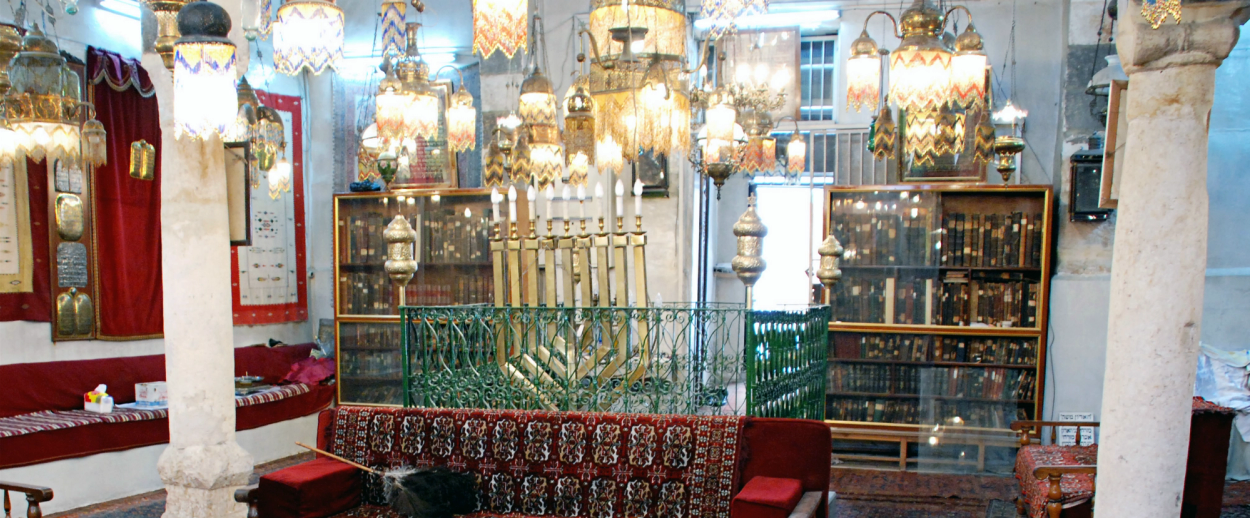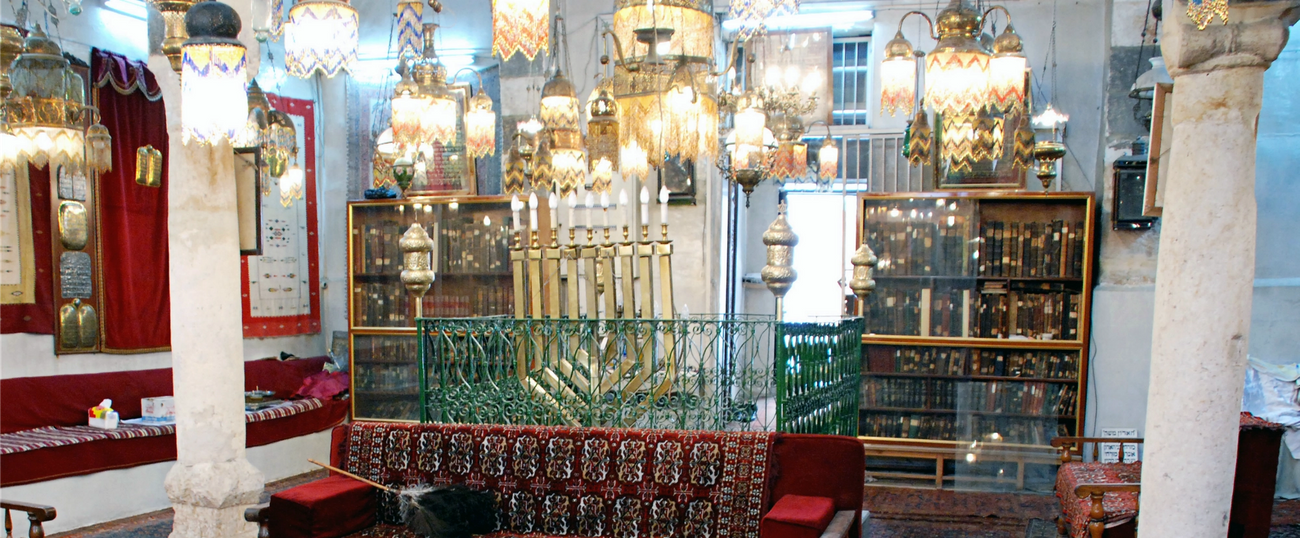Before Its Destruction: Jobar Synagogue in Syria
An organization called Diarna has created an online ‘geo-museum’ where visitors can explore historical Jewish sites in the Middle East and North Africa that no longer exist




A Jewish cemetery in Sudan. A network of ancient Jewish fortresses in Saudi Arabia. A Beirut synagogue restored with the endorsement of Hezbollah. A former synagogue, built in a gothic architectural style, now used as a mosque in Northwest Algeria. Iraqi Kurdistan, where thousands of Jews once made Shavuot pilgrimages to the tomb of a biblical prophet. A shrine and burial ground on the Syria-Turkey border, popular as a Jewish tourist site in the early 20th century, that later served as a secret exit point for Jews escaping Syria after 1948.
Locales in the Middle East and North Africa are rich with remnants of Jewish life and culture, much of it organized around once overlapping ethnic, political, and religious affiliations that seem nearly unimaginable today. But because so much of the region isn’t always accessible, many of these sites remain hidden from sight, and therefore from our memories.
Enter Diarna, an organization dedicated to preserving historical remnants across the region—online. Through extensive field research, Diarna, which translates to ”our homes” in Judeo-Arabic, has photographed and digitally “mapped” these sites, creating an online museum complete with data and narratives through which visitors can learn about the synagogues, schools, and other structures that once comprised Mizrahi Jewish life. Diarna operates from the American Sephardi Federation in New York City.
Scroll will frequently feature a new Diarna historical site, serving up architectural glimpses into a Jewish world that is fast decaying, if not being destroyed outright. This week, we begin with the Eliyahu Hanabi Synagogue, also known as the Jobar Synagogue, in Jobar, Syria, a suburb of Damascus. Some say the synagogue’s Jewish roots date back to the Talmud.
According to Diarna, the synagogue is said to mark the location where Elijah anointed his disciple Elisha, although historical data suggests that multiple structures have existed there since antiquity. Romanian-Jewish traveler and historian Israël Joseph Benjamin visited the site in the mid-19th century and wrote that the original structure had been destroyed by the Roman Emperor Titus, as well as a second synagogue, supposedly rebuilt in the first century by the Rabbi Eleazar ben Arach and destroyed in the 16th century.
In the 1840s, Reverend William Graham wrote that Damascene Jews would decamp to the synagogue, looking to escape the hustle and bustle of 19th-century Damascus. A few decades later, Reverend J.L. Porter wrote that Jewish pilgrims treated the area as a place to conduct leisure, “[spending] their long summer afternoons, often the entire night, under the bowers of vine and jasmine.” Porter also noted, “Not unfrequently [do] the groves resound with mirth, and revelry, and song.”
According to Diarna’s Ezra Ashkenazi, the majority of Syria’s Jews emigrated in the first half of the 20th century but the synagogue continued to be used regularly into the 1990s, when Hafez al-Assad, father of Bashar al-Assad, allowed the remaining Jews to emigrate. However, it remained under the control of the Syrian Jewish community—Jews from Damascus installed caretakers in the synagogue to maintain the space, look after its Torah scrolls, show it to visitors, etc.
In spring 2009, photographer Chrystie Sherman visited the synagogue and took the bulk of the photographs seen below. At the time, Sherman was working independently on her project “Home in Another Place: Journeys into the Jewish Diaspora,” for which she documenting Jewish communities in danger of extinction. She sought and received permission to travel in the region from the Assad regime and made contacts in Damascus’ Jewish community. In the 2009 images, the splendor of the synagogue is clear, from its lush red rugs, to its cool shaded courtyard, and the space is richly decorated with plaques and artefacts.
In early 2013, however, the synagogue’s outer courtyard and rooms were damaged by mortar fire. The structure has since been looted. For example, an English-language marble front-door placard, announcing the building as the “shrine and synagogue of prophet Eliahou Hanabi,” was stolen, leaving only signage in Arabic. The next year The Daily Beast published an article describing how Assad’s forces had destroyed the place of worship.
Photos and videos procured by Diarna in 2010 show a bright, airy, beautiful building filled with books, and decorated with gorgeous rugs and chandeliers. An inner courtyard, tiled in blue and white, held two well maintained saplings. A plaque posted in the sanctuary asked visitors, in Arabic, to remain quiet during prayers, and to respect the sanctuary, but it has since been looted.
After the destruction of the past few years, not much remains of the sanctuary or courtyard, although one of the trees still stands. Diarna correspondents familiar with weaponry used in the Syrian Civil War believe that the damage to the synagogue, while extensive, was not intentional.
Related: Renderings
Rose Kaplan is an intern at Tablet.
Rose Kaplan is an intern at Tablet.